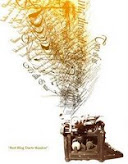When Michelangelo was a child, his mother became ill and couldn’t care for him, so he was sent to live with a stonecutter and his wife. Michelangelo joked that this is where he learned to love cutting stone into sculpture.
Michelangelo spent years studying the human body. He even looked at dead bodies so he could learn the way the muscles and bones were attached and how arms and legs moved. He drew sketches of people in various positions, concentrating on getting the muscles just right. Many of these sketches still exist so we can see how Michelangelo prepared to create his masterpieces.
 Michelangelo was very religious and many of his masterpieces show religious scenes or people from the bible. One of his most
Michelangelo was very religious and many of his masterpieces show religious scenes or people from the bible. One of his most  famous sculptures was David, the biblical hero who defeated Goliath. The sculpture was originally meant to stand in front of the Palazzo Vecchio in Florence, Italy. Today, a copy of Michelangelo’s work stands in this place (shown on the left). David is the statue on the left side of the door. The original (on the right side of the page) is in the Accademia, a Florence museum.
famous sculptures was David, the biblical hero who defeated Goliath. The sculpture was originally meant to stand in front of the Palazzo Vecchio in Florence, Italy. Today, a copy of Michelangelo’s work stands in this place (shown on the left). David is the statue on the left side of the door. The original (on the right side of the page) is in the Accademia, a Florence museum.Michelangelo believed that there was a sculpture in every piece of stone. He tried to let the stone speak to him and become what it was meant to be. His job as the artist was to free the sculpture from the stone.
Among his most famous paintings is the ceiling of the Sistine Chapel in the Vatican in Italy. It is made up of many panels illustrating scenes from the bible which Michelangelo painted directly onto the ceiling. A picture of the ceiling is shown below. I’ll write a post on the Sistine Chapel ceiling later this week and talk about some of the scenes and how Michelangelo painted this masterpiece.

When Michelangelo died in 1564, he had become one of the most known and admired artists of his time. He was even called “Il Divino” which means “the divine one.”
EDITED TO ADD: Check out my post on Michelangelo's Sistine Chapel
Return to main page.








13 comments:
I loved reading this! As a university professor in CA who teaches cinematography and editing, I frequently compare how we work in film to Michelangelo's process of approaching the marble, letting it speak to him, etc. Thanks!
i was reading this and i thought it was good, but then i started reading more and it turned into parts of Leonardo Da Vinci. I don't remember Michelangelo disecting corpses and studying how the body parts worked, i think that was da vinci not michelangelo... just letting you know not saying it wasn't good it was great! thanks!
I'm glad you liked it!
Anon 1:
That's a great connection to make. I had never thought about the similarities between sculpture and cinematography. The editorial stage of writing a book is comparable in the same way.
Anon 2:
Both Michelangelo and da Vinci dissected bodies. Michelango wanted to study bodies so badly that he made a deal to create artwork for a monastery in Florence if he could dissect the corpses in the hospital chapel. Many other Renaissance artists dissected corpes, as well.
I'm glad I checked, though. Thanks for drawing my attention to it!
I will use this for my students. You broke it down into words they can understand. THanks!
THX!! u helped me soooo much on mi soc. studies show. this was a great page! it rox!!!! thx again.
I was looking for something suitable and the words are just the right size. Thanks! By the way, when I compared it to World Book they are very similar but someparts might not be the same... Although there aren't many of them...
i liked the part when he ever looks it to a stone he saw a picture in it
I found this information very useful for my homework be cause we are comparing Leonardo Da Vinchi and Michelangelo and deciding who we think is a better Renaissance man. Thanks x!
thanks for posting this useful info on Michaelangelo !!!!!!!!!!!!!
Very useful to me as my history teacher set my class and I a history project on Michelangelo and the Renaissance.
when did he die?!
its 4 homework sorry...
when did he die?
Post a Comment